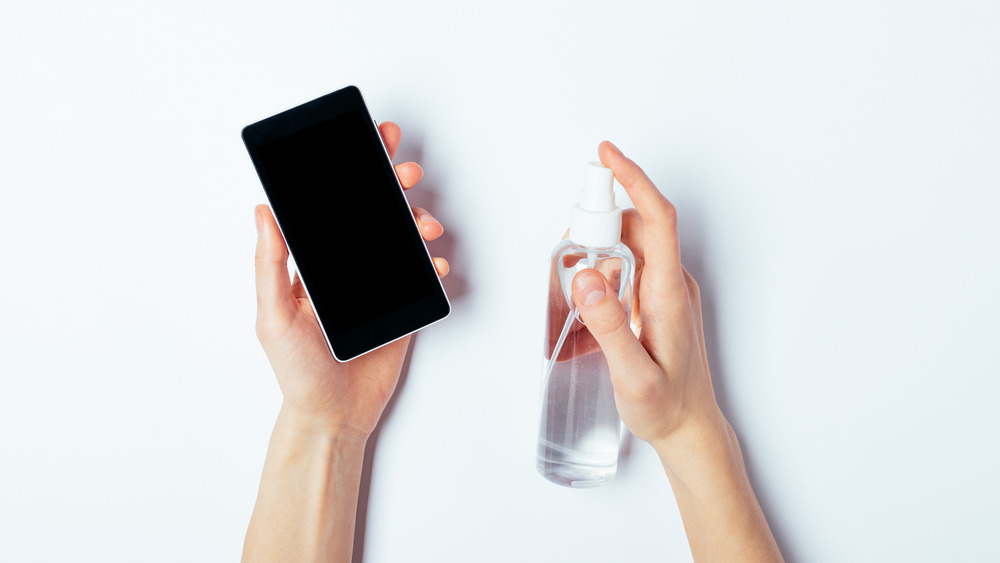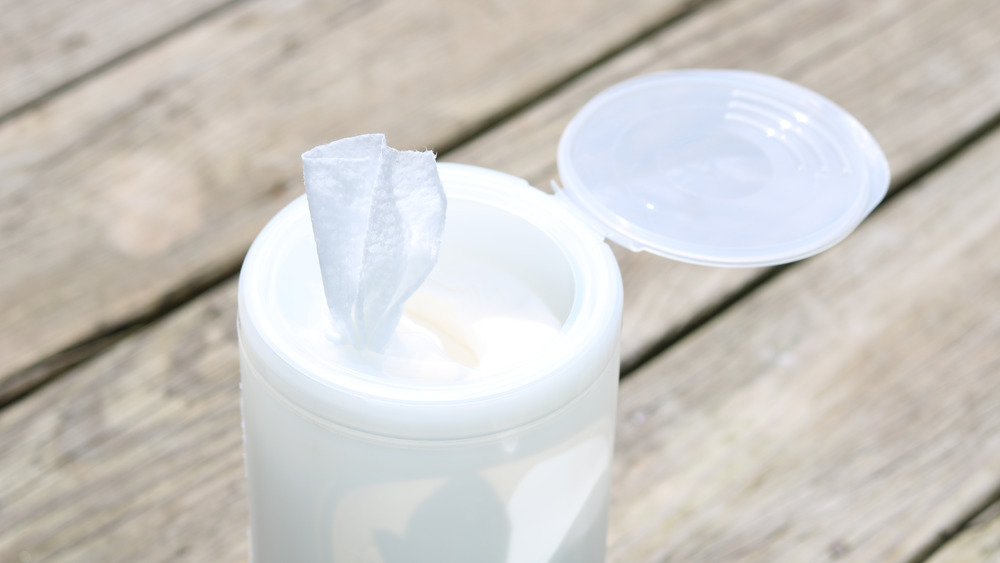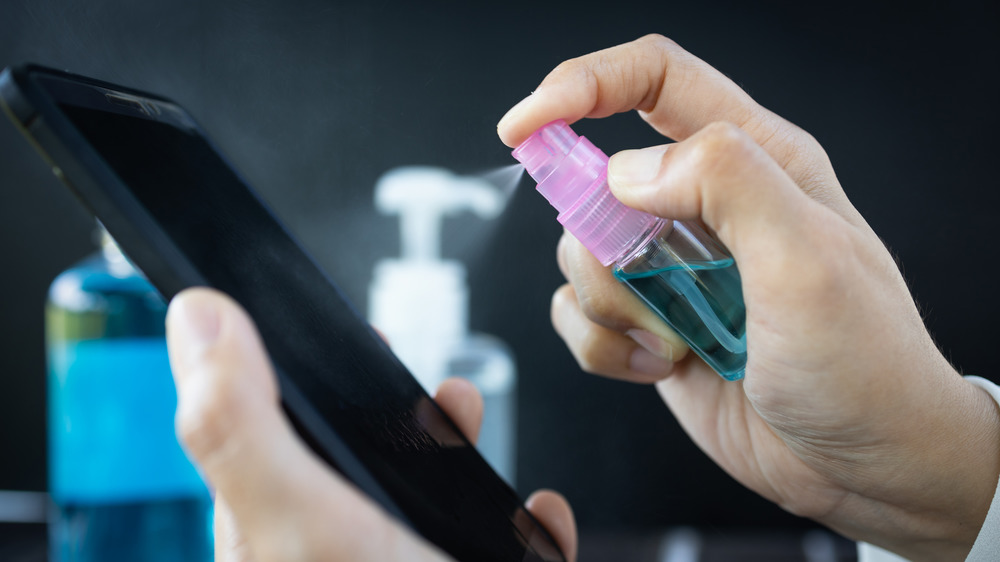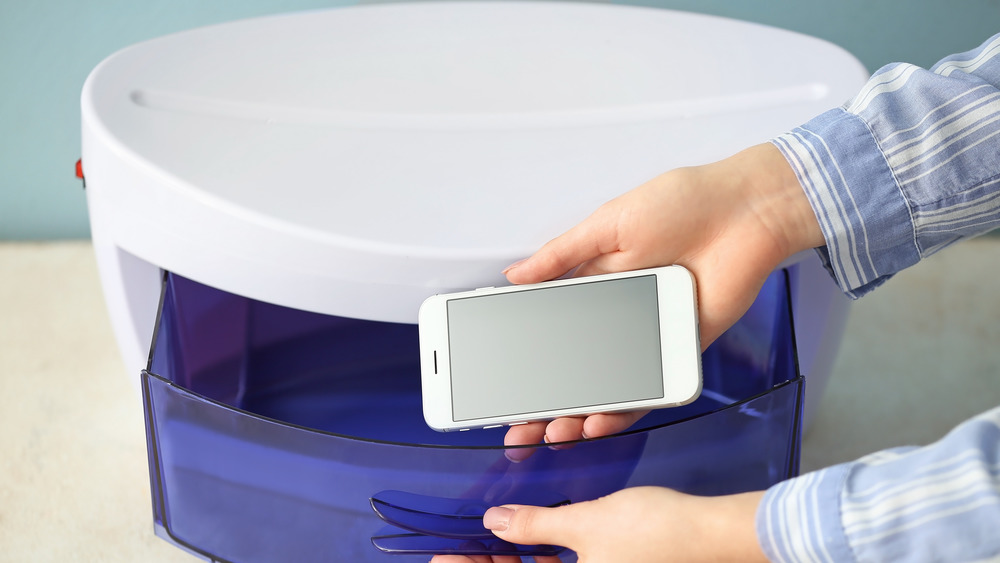The Biggest Mistakes You're Making When Cleaning Your Phone
We know that you're trying your best to stay clean and healthy during these COVID-19 times — we all are. Presumably you've had a go at all the usual protocol: wearing a mask, washing your hands, stocking up on Clorox wipes, obsessively using hand sanitizer. But there might be one big element of the sanitation process that you're missing: cleaning your phone. Experts say that this isn't only essential during COVID-19 times, but in general, as our phones can be responsible for attracting and holding surprising amounts of bacteria.
"Because people are always carrying their cell phones, even in situations where they would normally wash their hands before doing anything, cell phones do tend to get pretty gross," says Emily Martin, assistant professor of epidemiology at the University of Michigan School of Public Health. Studies even show that Americans check their phones about 47 times a day, which can lead to a major build up of bacteria (via Time). In addition, experts say that even if you are sanitizing your phone, you might actually not be doing it correctly.
Skin crawling? Ours too. Keep reading to learn about the best methods to cleaning your phone and staying as healthy as possible.
Clean every single inch of your phone, including covers and PopSockets
According to Pure Wow, proper phone sanitation involves five essential elements. Apple historically suggested using a damp microfiber cloth to clean your phone, but recently modified their recommendations. Now the tech company suggests gently wiping the exterior surfaces of your iPhone with a 70 percent isopropyl alcohol wipe or Clorox Disinfecting Wipes. Don't use bleach. Avoid getting moisture in any openings, and don't submerge your iPhone in any cleaning agents (via Apple). Furthermore, if you're going to clean your phone, make sure you clean the entire thing — not just the screen. Indeed, don't forget about the buttons and the case, as well. Try to visualize how you use your phone and the areas that you touch most, which, for the most part, is every inch of it. Don't forget about PopSockets or credit card holders, either!
Experts agree that using spray cleaners on your phone is a bad idea
There's a bit of a debate when it comes to what products you can or cannot use to clean your phone. While some say small amounts of alcohol and water is especially effective, Apple discourages it, and recommends avoiding aerosol sprays, bleaches, or abrasives (via Apple). In addition, avoid using spray cleaners, such as Windex or multi-surface cleaners, directly on the phone; Pure Wow says that doing so could permanently damage your phone. Some sources say that distilled water and white vinegar also works, which is a less severe but still effective way of disinfecting your phone (via Mashable).
Overall, however, the general consensus is that as long as you're cleaning your phone in its entirety, from corner to corner, the product is less important than the technique you use, i.e., gentle wiping instead of spraying.
If you're feeling especially fancy, consider getting a UV sanitizer
A recommended fool-proof product for taking your phone-cleaning game to the next level is a UV sanitizer. If you can't be bothered to put in the manual labor, this could be a great option for you. These products use UVC technology to kill germs and bacteria on the surface of your phone. According to the FDA, UVC technology has been proven to kill coronavirus-type bacterias, such as SARS, which leads experts to believe that it would be highly effective on COVID-19 (via the FDA). Simply put your phone in the sanitizer chamber, turn on the light, and let the machine go to work.
But in the end? Whatever your method is, make sure you're doing it regularly. Research by Dscout showed that we touch our phones nearly 2,617 times a day (via Business Insider), so regularly sanitizing our phones is essential to our health — which, according to the FCC, is "at least once a day as a preventative measure."



